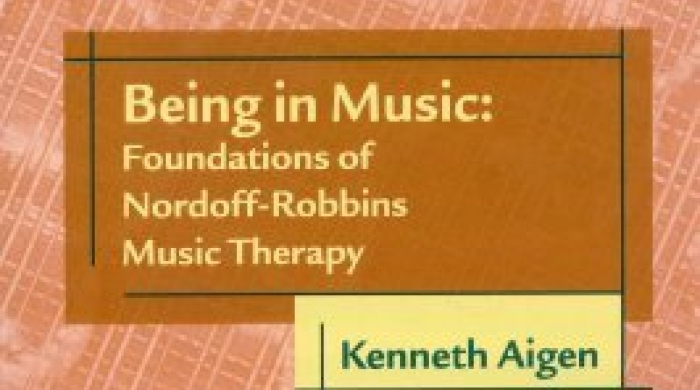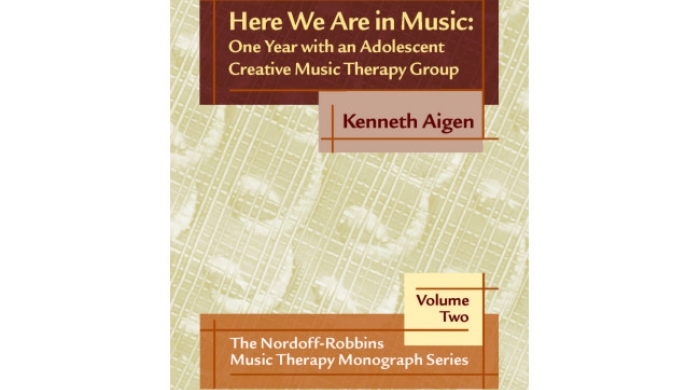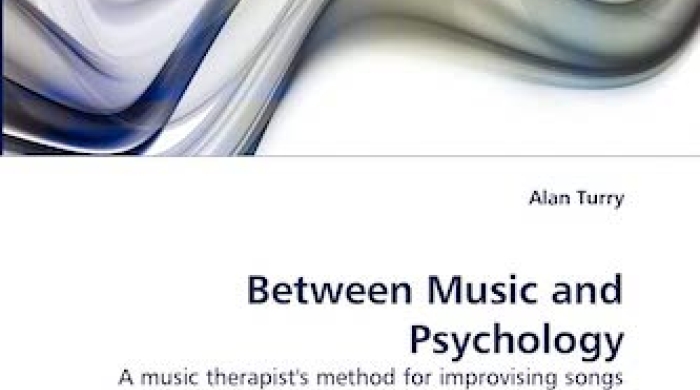
Our Research Mission
Nordoff-Robbins Music Therapy is a significant presence in the field of music therapy, with hundreds of certified practitioners and several training and research centers worldwide. Researchers collaborate with therapists in analyzing music therapy sessions to better understand the processes that make this work effective.
The research staff at our Center has pioneered the development and application of research methods to study creative and developmental processes in music therapy. This work has generated numerous scholarly publications and clinical training videos. Along with senior clinicians, doctoral and master's students in both the music therapy and applied psychology programs at NYU have undertaken a wide range of research projects based on the study of archived video recordings of clinical sessions. The Center's state of the art digital lab affords the opportunity to develop and maintain one of the world’s largest archives of recorded music therapy sessions.
Instrument Development
The Center’s primary research focus is the development of a valid and reliable instrument to measure musical engagement in music therapy sessions. Paul Nordoff and Clive Robbins are recognized as pioneers in using improvisation as a clinical intervention (Nordoff and Robbins, 2007). Less well-known is that they maintained a scientist-practitioner model, focusing on measuring gains occurring in sessions as well as innovative clinical techniques. Broadly speaking, they focused on the question “How are the therapist and client engaged in music making?” In their holistic case studies they asked and found a variety of answers to the question “How does increased musical engagement lead to overall improvement in the child’s life?” These early questions and findings of Nordoff and Robbins continue to be relevant for our current research at the Center.
Our current iteration of the Music Engagement Scale (Turry, A., Spellmann, M., Low, M., Birnbaum, J., Turry, H., Palumbo, A., 2021) grows from a decades long examination of how music therapy has the potential to improve the communication and social skills of autistic children. Preliminary findings indicate that increased engagement in the music making process leads to improvement in flexibility, responsiveness, attention, awareness, and organization, which in turn are essential to improving social interaction and communication. The Music Engagement Scale (MES) is designed to be an accurate and efficient measure of the quality of clients’ engagement in music making during NRMT sessions. As a sensitive engagement measure, it will also allow for evaluating therapeutic effectiveness across different schools and approaches to music therapy (e.g., Nordoff-Robbins, Analytic, Benenzon, Behavioral, Neurologic Music Therapy). Increased engagement, regardless of approach, can serve as a “common denominator” of therapeutic quality and effectiveness across the field.
Want to Learn More About the Music Engagement Scale (MES)?
Get InformationWant To Volunteer with the Center?
Volunteering offers an invaluable opportunity for involvement in multiple facets of the Center's operations. Depending on your background and interests, volunteers may participate in filming sessions, coding session videos using various observation instruments, performing data entry and analysis, writing articles and preparing grant proposals. Hours are flexible. We hope you will be interested in becoming a volunteer with the Center. For more information, click the "Get Started" button and complete our survey form.*
Get Started*If you are an NYU Applied Psychology student seeking placement at the Nordoff-Robbins Center, please contact Mariana Aslan via email: ma3070@nyu.edu. Do not apply using this volunteer form. Thank you.
Qualitative Research Publications
Being In Music: Foundations of Nordoff-Robbins Music Therapy
Based on transcripts of Nordoff and Robbins from their final and most thorough teaching collaboration, this study illuminates concepts, values, and world views underlying this seminal approach to Creative Music Therapy.
Here We Are in Music: One Year With an Adolescent
This study details how the improvisational essence of Nordoff-Robbins Music Therapy is applied by contemporary practitioners in a group setting, and demonstrates the value of interactional process-oriented therapy for developmentally delayed individuals.
Between Music and Psychology: A music therapist's method for improvising songs
This research illuminates how the therapist considered both the psychological meaning of the patient's words and the musical implications of her developing psychological process as he supported and stimulated her vocal expression from the piano.
Digitizing and Archiving Nordoff-Robbins Music Therapy
The Nordoff-Robbins Center possesses a large archive of recordings of music therapy, from the work of Paul Nordoff and Clive Robbins, to Clive and Carol Robbins, through the current generation of Nordoff-Robbins music therapists. With the help of a 2019 grant from the Mid-Atlantic Region of the American Music Therapy Association, we were able to digitize and archive over 650 music therapy sessions from VHS tape, as well as hundreds of excerpts, creating an ever-expanding archive of over 200 clients, with over 100 of them having a year or more of therapy archived.
Past Collaborative Studies
Therapeutic Preschool in Southeast Bronx
In addition to studying the effects of individual music therapy, efficacy of the intervention in group work with children on the Spectrum has been studied. Field data was collected at “These our Treasures” (TOTS), a therapeutic preschool in the southeast Bronx with a long-standing and highly regarded program of Nordoff-Robbins music therapy. Participants were 36 children, 2 through 5 years of age, diagnosed with autism spectrum disorder and other developmental disabilities. A lagged cohort control group design was employed, in which approximately half the children received music therapy in the fall, and half in the spring. The Vineland -II was administered to both the parents and the teachers of children in the study at the beginning, middle and end of the academic year. In addition music therapy sessions were videotaped at the beginning, middle and end of the each semester. Preliminary findings indicate greater improvements over the fall semester for the experimental group than for control group in expressive communication and receptive communication sub domains of Vineland. In addition to the Vineland, an instrument developed at the Center by an interdisciplinary team of music therapists and applied psychologists over a two year span was utilized to measure children’s communication and social interaction behaviors as observed during music therapy sessions. Correlations between this scale, the Music Therapy Communication and Social Interaction Scale (MTCSI) and the Vineland-II suggest that observed changes in music therapy generalize to other environments.
NYU Langone Medical Center
- Rusk Institute for Rehabilitation Medicine
According to statistics, approximately 795,000 cases of stroke occur annually in the United States. More than a third of stroke survivors suffer from negative mood disorders and a reduced sense of well-being, which are negative predictors of post-stroke motor recovery. The Nordoff-Robbins Center for Music Therapy and the Rusk Institute for Rehabilitation Medicine has initiated a pilot study, aiming to discover if a collaborative interdisciplinary music therapy/occupational therapy intervention can enhance upper limb functioning as well as psychological and social well-being for patients post-stroke. This intervention, named Music Therapy/Upper Limb Therapy - Integrated (MULT-I) involves a team of two Nordoff-Robbins music therapists and an occupational therapist from the Motor Recovery Laboratory at the Rusk Institute. Preliminary results have shown that this joint approach not only improved the subjects' upper limb functioning, but also self-awareness and expression through music, and peer support. This research is being funded in part by the American Music Therapy Associations’ Arthur Flagler Fultz award.
Department of Communicative Sciences and Disorders
- Speech therapy
Researchers from NYU Steinhardt’s Department of Communicative Sciences and Disorders are beginning an analysis of archived video recordings of entire courses of therapy to evaluate the effectiveness of music therapy in developing speech and communication skills. Populations that are included in this study are stroke rehabilitation patients and children with autism spectrum disorders who have speech and communication disorders. This is a first step in developing a collaborative intervention combining speech and music therapy.
Nordoff-Robbins Worldwide Links
- MUSICING: Korean Nordoff-Robbins Music Therapy Center
- Nordoff & Robbins UK
- Nordoff-Robbins Italia ETS
- Nordoff Robbins Polska




